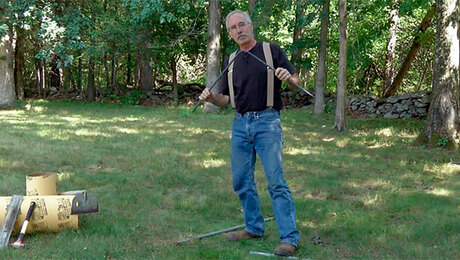Savvy viewers of our tip offerings here will note that we didn’t call this blog “There’s a Best Way”. There’s always a better way, as the comments listed below each video attest. Our job is to pitch a home-building idea that you can use.
If you’ve got a better way and care to share it, we hope you will join the conversation and either:
- Post it in our There’s a Better Way videos page.
- Or email your great ideas to [email protected].
All tips enter our review process to be featured in the magazine or our There’s a Better Way videos.
Now go check out the smart tips other readers have posted, and watch the videos we’ve made using our favorites!
– CM



























View Comments
At the weekend I had to create a flat bottomed hole to seat a nut and washer. Unfortunately all I had were Forstner bits and there was already a hole where the bolt had been so the bit had no centre to work from. I solved it a better way by using a big countersink (the ones used for opening holes in metal sheet) until the cone was slightly bigger than the Forsner bit I wanted to use. This allowed the cone to centre the outside of the bit and perfectly align. Job done.
Regards
Tony Wills
From London UK.
As a contractor, I usually worked alone, but sometimes I came up against something that, at first, appeared it couldn't be done by one person. Several years ago, one of those impossible tasks was hanging an 18 foot 2x6 fascia board at an eave. After thinking about it for quite a while, I drove a nail into the roof decking above the rafter where the fascia would end. Then I tied a small loop of rope onto the nail and let it hang down over the edge of the roof to the bottom side of the rafter tail. Then I put the end of the board through the rope with the other end resting on the ground. Holding the lower end I climbed the step ladder and nailed the fascia to the first couple of rafter tails. Then all I had to do was move the ladder down the fascia a couple of times and nail as I went.
Often you want a nice smooth finish on a piece of wood trim, oak stair treads, or furniture. It's common to use wood filler, but this is impractical and expensive on large surfaces.
A simple and inexpensive solution is to use plain old drywall compound or plaster of Paris.
Sand the wood in the normal fashion finishing up with 220 grit.
Use an appropriate putty knife to coat the wood with drywall compound. I use it right out of the bucket. Let it dry overnight.
Sand the piece down to remove the excess joint compound. You will see the joint compound has filled in the grain. If you want an extra smooth finish, repeat with a second coat.
Clean up the dust with a tack cloth.
Stain and finish in the normal manner.
When installing new kitchen or bathroom taps and the sink is already there along with a drain which gets in the way, I made a 'pipe' wrench to tighten those plastic nuts without using the tap wrench that you need to see what you are doing. I took a 12" piece of 1-1/4 " ABS, notched the ends for a two or four spoke nut and drilled a 1/4" hole in the other end for a screwdriver to aid in leverage. It works like a charm and you often don't need to climb in under the sink to use it!
I have pictures too!